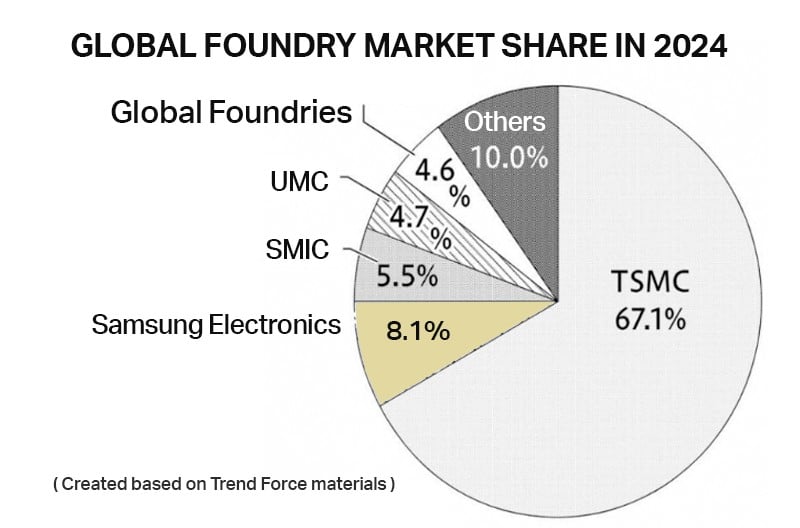
Title: Winds of Restructuring in Semiconductor Foundries: TSMC Leads, China Closes In
UMC and Global Foundries explore a merger as TSMC dominates advanced chipmaking and China expands its semiconductor footprint. Industry shake-ups reflect growing global competition.
The semiconductor contract manufacturing industry—also known as the foundry sector—is undergoing a major transformation. Taiwan’s United Microelectronics Corporation (UMC), the fourth-largest player, and the U.S.-based Global Foundries (GF), ranked fifth, are reportedly exploring a business merger. At the same time, Intel is in talks to collaborate with industry leader Taiwan Semiconductor Manufacturing Co. (TSMC). These developments reflect not only TSMC’s dominance in advanced semiconductor technologies but also the rising competitiveness of Chinese firms. Foundries, which have replaced traditional vertically integrated manufacturers (IDMs) as the new industry standard, are now facing a season of strategic realignment.
| Advertisement | |
Why UMC and GF Are Considering a Merger
Both UMC and GF manufacture semiconductors used in automobiles and communication equipment. According to TrendForce, a Taiwanese market research firm, UMC is expected to capture 4.7% of the global foundry market share in 2024, while GF is forecasted to hold 4.6%. Combined, their 9.3% share would surpass that of Samsung Electronics—the current second-place holder—with 8.1%. "Foundries tend to retain clients long-term, and joint purchasing helps reduce material costs. If factory operations are merged, it could lead to significant cost savings," an industry source noted.
China’s Growing Foundry Influence
A major factor driving these talks is the rapid growth of Chinese foundries. Semiconductor Manufacturing International Corporation (SMIC), China’s largest player, is already producing chips from mature process nodes down to 7 nanometers. Hua Hong Semiconductor is also aggressively expanding its analog chip production. SMIC even maintains a facility in Japan.
"China’s influence in analog and power semiconductors is incredible," a source said. "If manufacturing shifts away from Japan, it may be difficult to bring it back due to cost barriers."
Meanwhile, the automotive semiconductor segment is facing challenges. Operating rates for UMC and Powerchip Semiconductor Manufacturing Corporation (PSMC) have reportedly fallen sharply. These pressures, among others, are contributing to the push for consolidation.
Geopolitical Barriers to Mergers
However, the feasibility of a UMC-GF merger remains uncertain. In 2023, Intel abandoned its bid to acquire Israel’s Tower Semiconductor after failing to secure approval from Chinese regulators. Since a UMC-GF merger could impact SMIC’s competitiveness, it is unclear whether Chinese authorities would approve such a deal.
Advanced Semiconductor Collaboration
On another front, Intel and TSMC have reportedly agreed to establish a joint venture to operate a semiconductor plant, with TSMC holding a 20% stake. TSMC’s strength in advanced process technologies is unmatched, making the collaboration a strategic move. For the U.S. government—keen on preserving domestic capabilities in cutting-edge semiconductor manufacturing—this alliance could be critical to maintaining Intel’s global competitiveness.
Looking Ahead
With TSMC at the forefront and Chinese companies gaining ground, other foundries are caught in a high-stakes race to stay competitive. For many, restructuring may be the only path forward. As the semiconductor landscape evolves, cross-border partnerships and mergers could shape the future of global chip manufacturing.

#semiconductor #TSMC #UMC #GF #Intel #SMIC #จีน #ไต้หวัน #MReport #MReportTH #IndustryNews
Source: Nikkan Kogyo Shimbun
อัปเดตข่าวทุกวันที่นี่ www.mreport.co.th
Line / Facebook / X / YouTube @MreportTH







